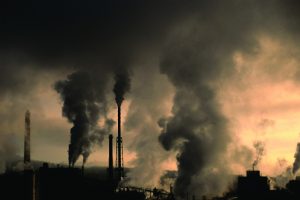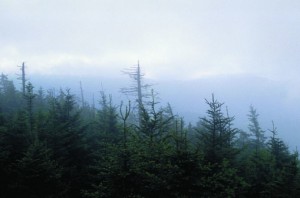Laura Nayibi Arias, Culture Editor

Acid rain is an environmental issue that has been affecting the Adirondack region since the late 1950s and has resulted in great vegetation and aquatic decline. Authors of “Science Revisited: Advances in scientific understanding since the passage of the 1970 and 1990 Clean Air Amendments,” suggest that “since the 1960s, more than half of large canopy red spruce in the Adirondack Mountains of New York…have died.” Moreover, there has been a great decline in the health of water systems and aquatic species.
Acid rain is caused by the input of a variety of acids from the atmosphere to the Earth’s surface, or acid deposition. The acids, which include sulfur dioxide, nitrogen oxides and ammonia, among others, are emitted by the burning of fossil fuels through industrial practices and agricultural activities. Acid rain is known to be a transboundry problem because the acid rain does not occur in the same place where the acid position takes place.
The Adirondack region is mostly susceptible to the effects of acid rain due to its location, geologic formation and altitude. D. Loki, author of “Acid Precipitation in the Adirondack Mountains,” asserts that about 75 percent of the acid deposition in the Adirondacks originates from states like Pennsylvania, Ohio, Indiana and Illinois. This is because wind transports acids from these areas, eastward. When the air reaches the Adirondack Mountains, “the first high-altitude area in the eastward path, they ascend and cool, often resulting in [acid] rain or snow,” says Loki.

Acid rainfall also affects other vegetation, soils, water and aquatic life, as well as the overall air quality. Acid rain can kill vegetation by depriving soils of essential nutrients to enhance richness, thus retarding the soil and the vegetation.
Aquatic ecosystems are effected by both direct acid rainfall and run-off. While the rain decreases the pH of water bodies and increases the concentration of aluminum, the run-off leaches metals from the soil and washes them into the water, polluting it further and affecting its aquatic life. Aluminum and mercury are especially detrimental to fish. While the aluminum reduces their ability to absorb oxygen, the mercury bioaccumulates in their tissues harming them and any other organism that consumes them.
Though the only way to prevent acid rain is by preventing acid deposition, Loki states that scientists are searching for ways to make the effects of acid rain less harmful to life in the threatened areas. But environmentalists argue that this would only encourage companies to further pollute the air with harmful chemicals. Life in areas threatened by acid rain would also have to be modified if they will be less susceptible to the acids, meaning that their natural functions would be disturbed through cell changing strategies.
Instead of trying to make nature adapt to our anthropocentric behaviors, we should try to encourage a change in industrial processes where the health of nature is considered and products, as well as the technologies used to make these products, are environmentally friendly.
Leave a Reply